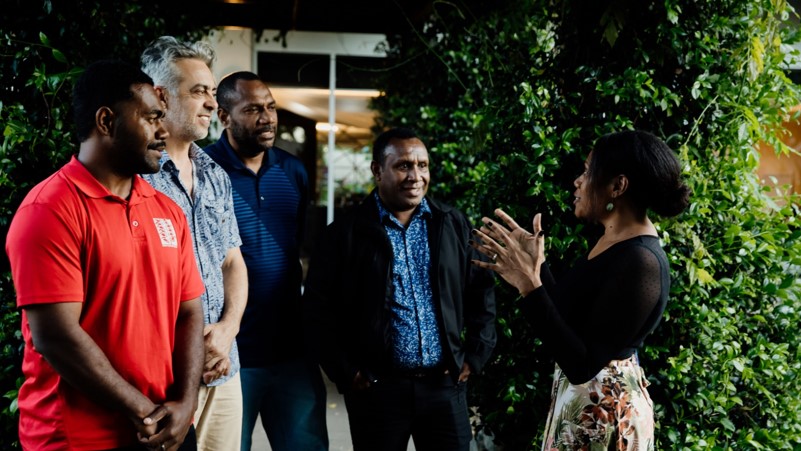In the Pacific, gender equality is a key policy concern for international donors and Pacific governments and civil society organisations. But decades of investment in gender equality programs have seen only modest gains. Women continue to be underrepresented in leadership and politics and rates of domestic violence remain stubbornly high.
Why is this the case? Our recent research for the Australia Awards Women Leading and Influencing program suggests that part of the answer may lie in how we have been approaching the issue. While the research focused on effective ways to build men’s support for women’s leadership, the findings point to broader issues in how gender equality is understood and talked about and who is included in gender equality programming.
One of the main obstacles is that gender issues are often seen as a foreign agenda, imposed by donors to meet their own policy targets (and align with what is seen as desirable in donor countries). Those we spoke to said that talk of “gender equality” and “women’s rights” sometimes put people off or was even divisive. Instead, we need to invest in understanding what gender equality means from Pacific perspectives and explain it in ways that resonate with Pacific values. As one young woman from Tonga who we spoke to said, “We need to change the tone of the conversation”. This means emphasising the positive benefits of gender equality for everyone. It also means drawing on values such as harmony, loving and caring for one another, and sharing resources which speak to the values of Pacific people.
One of the main obstacles is that gender issues are often seen as a foreign agenda, imposed by donors to meet their own policy targets.
A second issue is that men are often overlooked in efforts to promote women’s rights and women’s empowerment in the Pacific, with many programs focused exclusively on women. But men’s support for gender equality is critical. Because men often occupy a more powerful position in society, they need to get behind any change and be part of the solution, particularly as change often requires men to be willing to share power or make space for women. This is a lesson that has been learned in family violence work in both Australia and other countries. As a male development practitioner from Vanuatu reflected: “We don’t need to build capacity, we need to give women space. Men are acting as gatekeepers. We need to open up pathways for women to allow them to reach their potential as leaders.”

Being more intentional about including men and boys in gender equality programs can help them better understand the challenges women face and how they can support the women around them to lead. But efforts to involve men need to go beyond individuals to developing a critical mass of men supporting women in leadership and influencing roles. As one development practitioner we spoke to said: “to build a movement … you need to engage many voices, including men”.
A third issue is that “culture” has tended to be seen as at the heart of the gender inequality problem. But it can also be part of the solution. This approach involves “using culture to change culture” by drawing attention to the ways that different Pacific cultures and traditions support gender equality and women’s leadership. As a young woman from Vanuatu expressed it:
We can’t continue to blame our culture … Our culture promotes respect and promotes women’s leadership … Sometimes I feel we overplay that we don’t have a voice. There are avenues in our culture where women have a voice and that needs to be acknowledged.
Culture is also not static. A number of those we spoke to acknowledged that views about gender and women’s leadership in the Pacific were changing, with positive impacts on women’s representation in leadership roles in churches and the wider community.
One important cultural “hook” for promoting gender equality is the emphasis in many Pacific cultures on relationships and cooperation. This involves emphasising that gender equality is about shared leadership and men and women working alongside each other to create change. This approach recognises that both men and women have a role to play and that both contribute to development at home, in the community, at church, and in the nation.
There are no quick or easy solutions to the challenges of gender inequality – everywhere this is a long-term process of change. But there are ways of approaching this issue that are more in tune with Pacific values and ways of doing things that can help shift the dial. Changing the way we talk about gender issues, bringing men along, and harnessing aspects of Pacific cultures that support equality are a key part of what a different approach could look like in different contexts. And there are already Pacific organisations as well as a small number of development programs that are working in this way. Learning from their successes – and failures – can point to what gender equality means in the Pacific, and how to get there, the Pacific way.
TheAustralia Awards Women Leading and Influencing program is funded by the Australian government. The views expressed here are those of the authors and do not represent the view of the Australian government.


